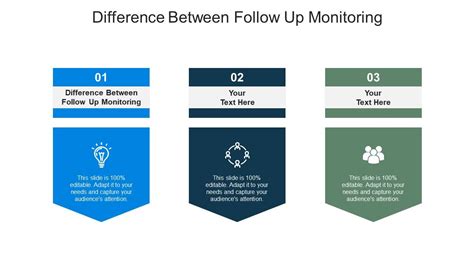Intro
Discover 5 key uses of Furosemide, a diuretic medication, including edema treatment, hypertension management, and heart failure relief, exploring its benefits and applications in medical therapy.
The importance of understanding medications cannot be overstated, especially for those dealing with chronic conditions or acute illnesses. Among the array of medications available, Furosemide stands out due to its widespread use and effectiveness in treating various conditions. Furosemide, known by its brand name Lasix among others, is a loop diuretic that acts on the kidneys to increase urine production, helping the body get rid of excess water and salt. This mechanism of action underpins its utility in managing several health issues.
Furosemide's role in medical treatment is versatile, ranging from acute settings like emergency departments to long-term management in outpatient clinics. Its application spans different age groups and conditions, making it a crucial drug in the arsenal of healthcare providers. The drug's efficacy in reducing fluid overload makes it particularly beneficial for patients with heart failure, where the heart's ability to pump blood efficiently is compromised, leading to fluid buildup in the body. Additionally, Furosemide is used in the management of hypertension (high blood pressure), where reducing fluid volume can help lower blood pressure and alleviate strain on the heart.
The drug's impact on the body's fluid balance also extends to its use in treating conditions like nephrotic syndrome, a kidney disorder characterized by excessive loss of protein in the urine, and edema, which is the swelling caused by excess fluid trapped in the body's tissues. Understanding the uses of Furosemide requires delving into its pharmacological properties and the pathophysiology of the conditions it treats. This knowledge not only aids healthcare professionals in making informed decisions but also empowers patients to better manage their health and adhere to treatment regimens.
Introduction to Furosemide

Pharmacokinetics and Pharmacodynamics
The pharmacokinetics of Furosemide involves its absorption, distribution, metabolism, and excretion. After oral administration, Furosemide is absorbed from the gastrointestinal tract, with its bioavailability varying due to factors like gastric pH and the presence of food. It is primarily excreted unchanged in the urine, with its onset of action beginning within an hour of administration and peaking within 1 to 2 hours. The pharmacodynamics of Furosemide, or its effects on the body, are characterized by its potent diuretic action, which can lead to significant increases in urine output. This action is dose-dependent, with higher doses leading to greater diuresis.Clinical Uses of Furosemide

Administration and Dosage
The administration of Furosemide can be oral or intravenous, depending on the clinical scenario and the patient's ability to take oral medications. The dosage of Furosemide varies widely, from as low as 20 mg to as high as 600 mg per day, and is tailored to the individual patient's response and the specific condition being treated. Monitoring of electrolyte levels, blood pressure, and renal function is crucial during Furosemide therapy to avoid potential side effects such as hypokalemia (low potassium levels), hypotension (low blood pressure), and acute kidney injury.Side Effects and Precautions

Interactions with Other Medications
Furosemide can interact with a variety of medications, either enhancing or diminishing their effects. For example, when used with other diuretics, the risk of dehydration and electrolyte imbalance increases. Furosemide can also interact with nonsteroidal anti-inflammatory drugs (NSAIDs), reducing their effectiveness and increasing the risk of kidney damage. The concurrent use of Furosemide with aminoglycoside antibiotics can increase the risk of ototoxicity (damage to the ear). Therefore, careful consideration of potential drug interactions is necessary when prescribing Furosemide, especially in patients with complex medication regimens.Monitoring and Follow-Up

Patient Education
Patient education plays a pivotal role in the successful management of conditions treated with Furosemide. Patients should understand the importance of adhering to their medication regimen, monitoring their condition, and recognizing the signs of potential complications. They should also be advised on lifestyle modifications that can complement Furosemide therapy, such as dietary changes to reduce salt intake and increase potassium consumption, and the importance of regular physical activity. By empowering patients with knowledge, healthcare providers can enhance treatment outcomes and improve the quality of life for individuals taking Furosemide.Future Directions and Research

Conclusion and Recommendations
In conclusion, Furosemide is a versatile and effective medication with a wide range of applications in managing conditions associated with fluid overload and electrolyte imbalances. Its use requires careful consideration of potential side effects, drug interactions, and the need for ongoing monitoring and patient education. As healthcare continues to evolve, the role of Furosemide will likely expand, driven by advances in pharmacology and our deeper understanding of disease mechanisms. For healthcare providers, staying abreast of the latest research and guidelines on Furosemide use is essential to optimize treatment outcomes and improve patient care.What is the primary use of Furosemide?
+Furosemide is primarily used to treat conditions associated with fluid overload, such as heart failure, hypertension, and edema.
How does Furosemide work?
+Furosemide works by inhibiting the sodium-potassium-chloride cotransporter in the kidneys, leading to increased excretion of sodium, chloride, potassium, and water.
What are the common side effects of Furosemide?
+Common side effects of Furosemide include increased urination, thirst, dizziness, and lightheadedness. More serious side effects can include dehydration, electrolyte imbalances, and allergic reactions.
Can Furosemide be used in pregnant women?
+Furosemide should be used with caution in pregnant women, as its safety in this population has not been well established.
How should Furosemide be monitored?
+Monitoring of Furosemide should include regular assessment of blood pressure, electrolyte levels, renal function, and urine output, as well as patient education on recognizing signs of potential complications.
We invite you to share your thoughts and experiences with Furosemide in the comments below. If you found this article informative, please consider sharing it with others who might benefit from this information. Additionally, we encourage you to explore other resources and discuss with healthcare professionals to deepen your understanding of Furosemide and its applications in medical treatment.
